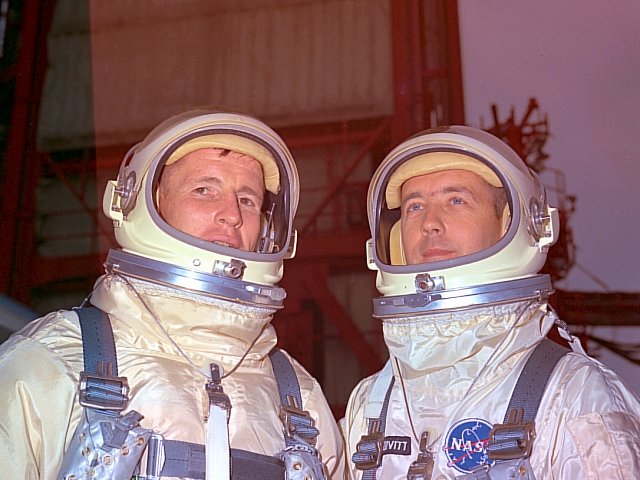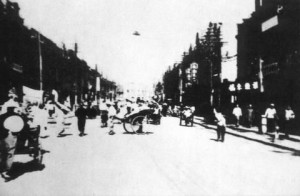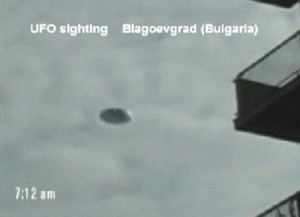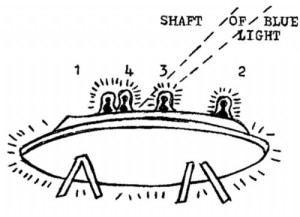THINK ABOUTIT SIGHTING REPORT
Date: June 1965
Sighting Time: 3:00 CST
Day/Night:
Location: Earth Orbit
Urban or Rural: -Space
Hynek Classification: NL (Nocturnal Light) Point or extended luminous source observed at night.
Duration:
No. of Object(s): 1
Height & Speed:
Size of Object(s):
Distance to Object(s):
Shape of Object(s): Cylinder
Color of Object(s): white
Number of Witnesses: Single
Source: Patrick Gross, UFOs at Close Sight (ufologie.net) Original Source
Summary/Description: In June 1965, Major James McDivitt saw, filmed, and photographed an object, which approached the Gemini IV (3rd June – 7th June 1965) capsule in which they were orbiting the Earth, passing over Hawaii. He stated: “It had a very definite shape – a cylindrical object – it was white – it had a long arm that stuck out on the side.”
Full Report
In June 1965, Major James McDivitt saw, filmed, and photographed an object, which approached the Gemini IV (3rd June – 7th June 1965) capsule in which they were orbiting the Earth, passing over Hawaii. The UFO had a long arm sticking out of it.
Here is what Major James McDivitt repeated many times:
“I was flying with Ed White. He was sleeping at the time so I don’t have anybody to verify my story. We were drifting in space with the control engines shut down and all the instrumentation off (when) suddenly (an object) appeared in the window. It had a very definite shape – a cylindrical object – it was white – it had a long arm that stuck out on the side. I don’t know whether it was a very small object up close or a very large object a long way away. There was nothing to judge by. I really don’t know how big it was.
We had two cameras that were just floating in the spacecraft at the time, so I grabbed one and took a picture of (the object) and grabbed the other, and took a picture. Then I turned on the rocket control systems because I was afraid we might hit it. At the time we were drifting – without checking I have no idea which way we were going – but as we drifted up a little farther the sun shone on the window of the spacecraft. The windshield was dirty – just like in an automobile, you can’t see through it. So I had the rocket control engines going again and moved the spacecraft so that the window was in darkness again – the object was gone. I called down later and told them what had happened and they went back and checked their records of other space debris that was flying around but we were never able to identify what it could have been.
The film was sent back to NASA and reviewed by some NASA film technicians. One of them selected what he thought was what we talked about, at least before I had a chance to review it. It was not the picture – it was a picture of a sun reflection on the window.”
The “Condon Report” is considered by almost all ufologists and by several scientists who participated to it as a deliberate attempt to debunk the UFO phenomenon, did validate the McDivitt UFO sighting and several other astronaut sightings:
“There are three visual sightings made by the astronauts while in orbit which, in the judgment of the writer, have not been adequately explained. These are 1. Gemini 4, astronaut McDivitt. Observation of a cylindrical object with a protuberance. 2. Gemini 4, astronaut McDivitt. Observation of a moving bright light at a higher level than the Gemini spacecraft. 3. Gemini 7, astronaut Borman saw what he described as a ‘bogey’ flying in formation with the spacecraft.”
And later: “visual sightings made by the astronauts while in orbit which, in the judgment of the writer, have not been adequately explained… Unexplained sightings that have been gleaned from a great mass of reports are a challenge to the analyst. Especially puzzling is the first one [The one presented here] of an object showing details such as arms protruding from a body having a noticeable angular extension. If the NORAD listing of objects near the GT-4 spacecraft at the time of the sighting is complete as it presumably is, we shall have to find a rational explanation or, alternatively, keep it on our list of unidentified.”
In 1975, McDivitt adds: “I never made a big deal out of it. It was something I definitely couldn’t identify. I reported it to the ground … Ed was asleep and we were rotating at a pretty high rate in drifting flight. The windows were dirty, I recall … All of a sudden there was this white object out there. It looked like a beer can with a pencil sticking out of it at an angle. It had a definite cylinder shape, about three times as long as its diameter.” Maloney adds that the astronaut estimated that he got a 30-second look at the object. Furthermore, McDivitt said, the space agency made no attempt to prevent his telling his UFO story.
A NORAD officer later handed to the well-known debunker Klass a print of the Titan-II second stage. This, he told Klass, was what McDivitt had seen but was unable to identify: the Titan booster. Klass obtained a copy of the photo from NORAD and sent it to McDivitt, asking if it did not closely correspond to his verbal description of the UFO he had seen. McDivitt replied:
“Thank you for sending me the slide of the Gemini-IV photograph. I very quickly identified the object in the photograph as the second stage of the Titan rocket which launched us … I am sure that this is not a photograph of the object which I described many times and which many people refer to as the Gemini IV UFO….”
McDivitt did not see any special importance in what he saw. He did not file any UFO report, he also always insisted that it was not the Titan II booster. He also never gave an opinion about the nature of what he saw. Some researchers rightfully noted that the astronauts eyesight was affected by the long exposition to the oxygen saturated atmosphere in the Gemini capsule. Some ufo-promoters did exaggerate the story. But debunkers did understimate it also on occasion. Almost everyone agrees that it could not have been a human satellite, such as a secret US satellite or a Russian craft.
Condon Report statement on Gemini 4 UFO sighting
Source: Franklin Roach, in The Condon Report, 1968 Original Source
Summary: “There are three visual sightings made by the astronauts while in orbit which, in the judgment of the writer, have not been adequately explained. These include Gemini 4, astronaut McDivitt. Observation of a cylindrical object with a protuberance.
8. Unidentified Flying Objects
There are three visual sightings made by the astronauts while in orbit which, in the judgment of the writer, have not been adequately explained. These are:
Gemini 4, astronaut McDivitt. Observation of a cylindrical object with a protuberance.
Gemini 4, astronaut McDivitt. Observation of a moving bright light at a higher level than the Gemini spacecraft.
Gemini 7, astronaut Borman saw what he referred to as a “bogey” flying in formation with the spacecraft.
1. Gemini 4, cylindrical object with protuberance.
Astronaut McDivitt described seeing at 3:00 CST, on 4 June 1965, a cylindrical object that appeared to have arms sticking out, a description suggesting a spacecraft with an antenna.
I had a conversation with astronaut McDivitt on 3 October 1967, about this sighting and reproduce here my summary of the conversation.
McDivitt saw a cylindrical-shaped object with an antenna-like extension. The appearance was something like the second phase of a Titan (not necessarily implying that that is actually what be saw) It was not possible to estimate its distance but it did have an angular extension, that is it did not appear as a “point.” It gave a white or silvery appearance as seen against the day sky. The spacecraft was in free-drifting flight somewhere over the Pacific Ocean. One still picture was taken plus some movie exposures on a black and white film. The impression was not that the object was moving parallel with the spacecraft but rather that it was closing in and that it was nearby. The reaction of the astronaut was that it might be necessary to take action to avoid a collision. The object was lost to view when the sun shone on the window (which was rather dirty). He tried to get the object back into view by maneuvering so the sun was not on the window but was not able to pick it up again.
When they landed, the film was sent from the carrier to land and was not seen again by McDivitt for four days. The NASA photo interpreter had released three or four pictures but McDivitt says that the pictures released were definitely not of the object he had seen. His personal inspection of the film later revealed what he had seen although the quality of the image and of the blown-up point was such that the object was seen only “hazily” against the sky. But he feels that a positive identification had been made.
It is McDivitt’s opinion that the object was probably some unmanned satellite. NORAD made an investigation of possible satellites and came up with the suggestion that the object might have been Pegasus which was 1200 miles away at the time. McDivitt questions this identification.
Preliminary identification of the object as Pegasus B is suspect. When fully extended Pegasus B has a maximum dimension of 29.3 meters, which corresponds to 1/20 minute of arc at a distance of 2000 km. This is much too small an angular extension for the structure of the craft to be resolved and thus does not agree with the description of
“arms sticking out.” Later in the mission, Pegasus B was at a much more favorable distance (497 km.) from the Gemini 4 spacecraft or four times as close as during, the reported sighting. Astronauts McDivitt and White reported that they were not successful in a serious attempt to visually identify the Pegasus B satellite during this encounter.
The ten objects in addition to Pegasus B in the NORAD list were all at considerably greater distances away from GT-4 than an admittedly crude estimate of 10 miles (16 km.) made by McDivitt and were of the same or smaller size than Pegasus B. They would not appear to be likely candidates for the object sighted by the astronaut.





Related Reports
NASA Astronauts and UFO Sightings – Article
1951: Astronaut Gordon Cooper Says Aliens Are Here! – Article
1957: Gordon Cooper & UFOs: An Astronaut Speaks Out – Article